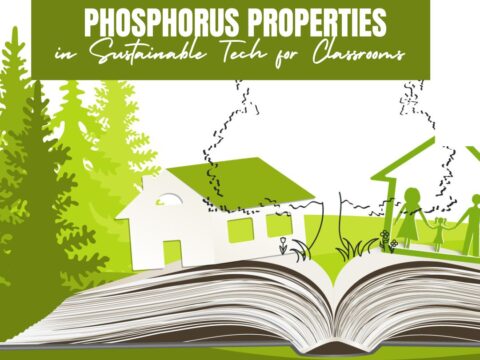 For anyone who missed the April announcement, Twitter switched its app category from ‘social media’ (where it consistently ranked in the top ten with Facebook, Instagram, Messenger, WhatsApp, and Pinterest) to ‘news’ (now ranked #1, ahead of apps like CNN, Fox News, and Reddit). It makes sense; tweets and twitter streams have been part of hard-core news reports for years as an effective way for leaders and politicians to reach their constituents and pollsters to gauge what interests people. A good example is this series of tweets explaining the Brexit vote.
For anyone who missed the April announcement, Twitter switched its app category from ‘social media’ (where it consistently ranked in the top ten with Facebook, Instagram, Messenger, WhatsApp, and Pinterest) to ‘news’ (now ranked #1, ahead of apps like CNN, Fox News, and Reddit). It makes sense; tweets and twitter streams have been part of hard-core news reports for years as an effective way for leaders and politicians to reach their constituents and pollsters to gauge what interests people. A good example is this series of tweets explaining the Brexit vote.
As an educator, I am thrilled. Twitter’s gossipy reputation among administrators and most parents negates its dynamic applications in the classroom. With the not-so-recent addition of audio and video files (easily embedded from sites like Instagram and Periscope), educators can easily use it as a student-friendly approach to everything from assessment to sharing notes.
Before unpacking Twitter in your classroom, here are a few guidelines:
- Clear its use with your administration. Be prepared to educate them on why what seems to be social media is actually educational.
- Inform parents that their children will be using Twitter to collaborate, share information, study for tests, and other uses specific to your program. Again, as with your administration, be prepared to explain the benefits of a Twitter-powered class.
- Twitter doesn’t have a lower age limit, but does reference ‘thirteen’ as a suggested minimum age. You decide what fits your group. You may also decide that setting the Twitter stream as private (called ‘protected Tweets’) is a good educational decision.
- Demonstrate how to use Twitter and what the symbols mean (tie this into a class discussion on math symbols).
- Establish rules for Twitter use. Remind students it is for educational uses only; chatting and socializing must be done through other means. Then enforce it by suspending privileges, warning abusers, or whatever works best in your classroom climate.
- Check out the Twitter streams of other educators before starting. Here’s one for a first-grade class to get you started. The visual of how they use it to enhance education is powerful.
Here are my ten favorite uses of Twitter in my classroom:
Answer tech problems
Create a class #hashtag students use to ask for tech help (something like #QesadoTech — keep it as short as possible and check to be sure it’s not already being used). Students post their question and answer those of classmates. It’s a crowdsourced Twitter-powered helpline for students that will save them time and answer most issues. Don’t jump in to help until you’re sure no one else can.
Backchannel device
As you present the lesson, students provide feedback by using Twitter as a backchannel device. Using a pre-agreed #hashtag, they weigh in on confusing parts or questions they have without disrupting the flow of the class. The #hashtag Twitter stream is displayed on the class screen where students can answer each other’s questions or add their thoughts. You can even embed that stream with a widget provided by Twitter. Yes, this takes management and some practice, but provides a durable resource that can be used for review and study from anywhere with the Internet.
Feedback
Students provide their thoughts on classwork using an agreed-upon #hashtag. This is especially useful in flipped classrooms where students review videos to prepare for class. The ability to shout out to classmates, to be answered whenever they access their Twitter stream, is huge.
Formative assessment
Ask a summative question about the lesson and have students answer via Twitter (with the unique #hashtag). The question should be brief, within the limitations of 140 characters. As answers arrive, you’ll get a good overview of student understanding of a topic. This can be live-streamed to the class screen or kept private. You decide.
You can also tweet out a short on-topic video or image and ask for student reactions.
Group study session
Students join together for a Twitter Chat to review lesson material or complete a group project. This can happen from anywhere, at any time, from a wide variety of digital devices. No driving required; no central meeting location; no dress code. Students simply boot up their digital device, log into Twitter (olders will have their own accounts), enter the #hashtag into the search bar, and start. Remember to always append the #hashtag to tweets before pushing send.
Keep parents up to date
Tweet out a daily class update to parents using a class #hashtag. This can include videos and images with the 140 characters. For youngers, this can be prepared as a class, with student input.
Last-minute notifications
When students reach the age when their phone is Krazy-glued to their hand, using Twitter to notify them of last minute changes is a no-brainer. They get the announcement wherever they are.
Notetaking
Students take notes on a class, reading materials, or group study by adding their ideas to a Twitter stream using a pre-arranged #hashtag. Olders will use their own Twitter account; youngers will use a class account. The youngest likely will do this as a group, accessed anywhere with an Internet connection.
Teach digital citizenship
Use Twitter to teach students how to behave in the digital world. They want to use Twitter — it’s the forbidden fruit. Expect them to do that as good digital citizens — show respect for all users, use appropriate writing skills, understand that what they’re saying is shared with the world (sure, Twitter accounts can be private, but at some point, students may choose not to employ that protection. Help them see the consequences of that choice), and avoid cyberbullying.
Twitter novel
Anyone who can write a pithy, concise statement in 140 characters allowed by Twitter knows how to write. Applied to the classroom, students are eager to try-fail-try again in the effort to communicate within the conscripts of this exciting social tool. I’ve talked about how Twitter serves student education goals before, but let’s kick it up a notch and challenge students to write an entire novel using Twitter. If you search #twitternovel on Twitter, you’ll find amazing examples, dating back half a decade. For example, this from Rachel Johnson:
My most memorable Father’s Day? Uh, well, I guess that would be the last one Dad spent with the family.
There’s no better way to learn and understand fiction writing skills than to fit plot, setting, story arc, and character development into 140 characters.
***
Now you’re ready. If you’ve never used Twitter, this is a great time to model risk-taking, problem-solving, and authenticity for students. Questions — add comments. I’ll help you out.
Jacqui Murray has been teaching K-18 technology for 30 years. She is the editor/author of over a hundred tech ed resources including a K-12 technology curriculum, K-8 keyboard curriculum, K-8 Digital Citizenship curriculum. She is an adjunct professor in tech ed, Master Teacher, webmaster for four blogs, an Amazon Vine Voice, CSTA presentation reviewer, freelance journalist on tech ed topics, contributor to NEA Today, and author of the tech thrillers, To Hunt a Sub and Twenty-four Days. You can find her resources at Structured Learning.





































2 thoughts on “10 Ways to Use Twitter in Class”
Comments are closed.